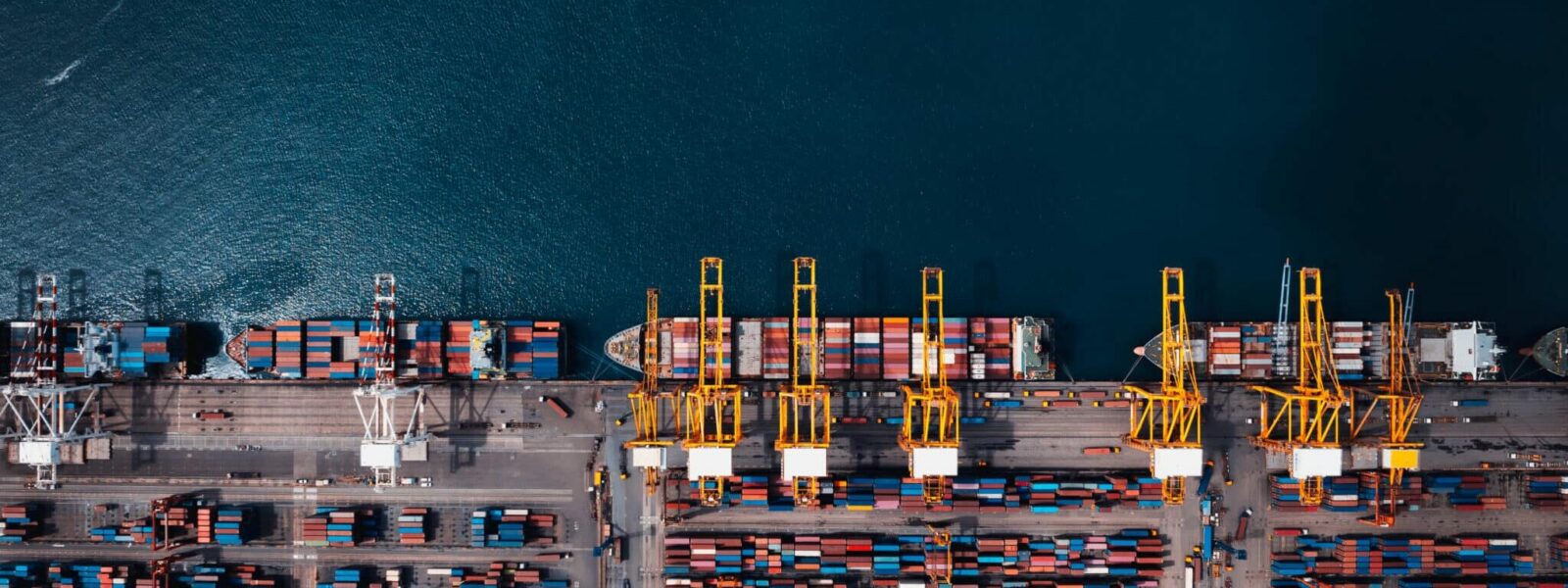Customs tariffs: “The world is perceived as a combat arena and no longer as a space for cooperation”
- Since his return to the White House, President Donald Trump has placed tariffs at the heart of international concerns.
- On Wednesday 9th April, all trading partners were subject to blanket customs duties of 10%, with the exception of China, which will be taxed at 125%.
- This geo-economic and ‘competitivist’ policy breaks with the internationalist vision that prevailed from Franklin D. Roosevelt to Barack Obama.
- The EU has prepared measures to respond to the US threats, including tariffs on a selection of US products.
- Concerns about the long-term impact are mainly focused on foreign direct investment: 40% of US FDI is in Europe.
Since his return to the White House, President Donald Trump has made tariffs a major international issue. They have never been so widely discussed and modified. Before this episode, how were they usually established?
Christian Deblock. Throughout history, tariffs have gradually been lowered until they lost their central place in trade negotiations between states. However, each country remains in control of its tariffs, as this is a sovereign right. Since the Second World War, with the establishment of the GATT (General Agreement on Tariffs and Trade, signed in 1947) and then the WTO (World Trade Organisation, created in 1995 by the Marrakesh Agreement), tariffs have been greatly reduced and regulated with the ultimate aim of harmonising practices and fully liberalising international trade.
Today, around 80% of international trade is conducted on the most favoured nation principle. After a series of negotiations, the States undertook to respect maximum customs duty rates, in other words the “bound tariff”, while the “effective tariff” corresponds to the rate applied in practice. Thus, thanks to the bound tariffs, international trade enjoys greater predictability and stability.
Alongside the multilateral tariff, there is a second category linked to regional agreements, such as NAFTA/CUSMA, Mercosur or the European Union. Finally, and more marginally, there are preferential agreements applied for developing countries, without reciprocity. To this panorama, we must add the so-called “applied correction” measures when countries use unfair practices such as dumping or subsidisation.
During negotiations, international trade rules have been strengthened, as have dispute settlement procedures. All this is to avoid abuse and unilateralism by members.
The United States has adopted legislative tools to retain some leeway in the face of international regulations. What are they?
Although the architecture of the rules governing international trade is firmly established, the United States enjoys considerable leeway. Under Section 301 of the Trade Act of 1974, the Trade Representative may suspend trade concessions or impose restrictive measures if it is demonstrated that the trading partner is violating its trade commitments or has discriminatory trade practices. Denounced by several countries, the WTO has nevertheless validated this mechanism. It is precisely this tool that is now being used against China.
Another lever is Section 232 of the Trade Expansion Act of 1962, which gives the President the power to impose tariffs or take any other measure if a substantial increase in imports is likely to cause or threaten irreparable harm to an American industry or the American economy. We should also mention the International Emergency Economic Powers Act of 1977, which President Trump invoked on 2nd April 2025.
A real strategy behind the tariff increases?
During his first term in office, Donald Trump initiated an overall increase in customs duties. However, the announcements followed one after the other according to a certain logic: the measures first targeted NAFTA – described by the American President as “the worst agreement ever signed by the United States” – before turning to China, then targeting the European Union.
Trump’s second term is characterised by the brutality of the methods employed and the accumulation of measures from all angles. No partner is spared. On 1st February 2025, three executive ordersprovide for the application of +25% customs duties on Mexican and Canadian imports and +10% on products imported from China. At the same time, President Trump asked the various agencies involved to draw up an inventory of how countries discriminate against the United States in trade matters (tariffs, subsidies, taxes, regulations, etc.), by 1st April.

The result was announced on 2nd April: a general tariff of 10% and additional tariffs known as reciprocal tariffs for almost all countries, with the notable exception of Canada and Mexico. These include the EU (20%), China (34%), Japan (24%), Vietnam (46%), Cambodia (49%) and Taiwan (32%). On Wednesday 9th April 2025, the United States imposed new surtaxes on products from nearly 60 trading partners, with additional customs duties ranging from 11% to 60%, with the exception of China, whose products were taxed at 104%. However, the situation changed again shortly afterwards, with Donald Trump announcing the suspension of reciprocal tariffs for 90 days. Trading partners are now subject to uniform customs duties of 10%, with the notable exception, once again, of China, this time taxed at 125%.
This policy is a complete break with the internationalist vision that prevailed from the presidency of Franklin D. Roosevelt to that of Barack Obama. It is now being replaced by a geo-economic and “competitiveness” vision of the world. If, ultimately, the aim is to refocus the global economy on the United States, this vision already exists; it is the one that China is pursuing, with the aim of dislodging the United States from its still hegemonic position. But does Donald Trump really have the means to realise his ambitions? Can he apply the same methods as China without jeopardising the economic stability of his own country?
The EU has promised to react “firmly and immediately”. How does it intend to retaliate?
Forced to react, the European Union has prepared a package of measures to respond to the American threats. The reactions were immediate, although, in fact, relatively cautious. Measures have therefore been taken to retaliate against a selection of American products. This cautious reaction can be explained first and foremost by the desire to avoid escalation with an extremely powerful trading partner, but also to avoid attacking products with a globalised value chain. It is easier to tax oranges than car parts from a vehicle manufactured and assembled in different countries.
But since 2nd April 2025, Donald Trump has shaken up the entire organisation of value chains. The real question is whether or not the European Union will tip over into the geo-economics of competitiveness. Mario Draghi’s report, presented in Brussels in September 2024, already sounded the alarm about the loss of competitiveness of European companies in the face of American and Chinese giants. It pointed out the dangers looming over the EU and called on Member States to rethink trade policies. European values are still part of liberal internationalism, but in the face of the brutality of current methods, is this the right strategy?
All losers?
Naturally, with the new measures sought by the Trump administration, there will inevitably be consequences for the global economy. Trade will be disrupted, undermining the stability that the business world needs to function. Price increases and economic shocks are to be expected everywhere. According to most models, the most fragile economies will be the first and hardest hit.
Europeans should not underestimate the impact on their own market. Admittedly, two thirds of its trade is internal, but all member countries have trade surpluses with the United States. Concerns about the long-term impact mainly centre on American foreign direct investment (FDI): 40% of American FDI is in Europe (in Ireland, the Netherlands, the United Kingdom, etc.). A movement to repatriate capital to the United States will damage many European economies, first and foremost Ireland, which is particularly exposed, since half of its GDP depends on American multinationals.
A geo-economic turning point
The logic of rivalry has taken over in international affairs, with actors now acting according to a competitive and strategic vision. The United States is acting in the name of national economic urgency and opting for exaggerated unilateralism. The world is perceived as a combat arena and no longer as a space for cooperation. The trade war is just another war among all the existing battlefields.














